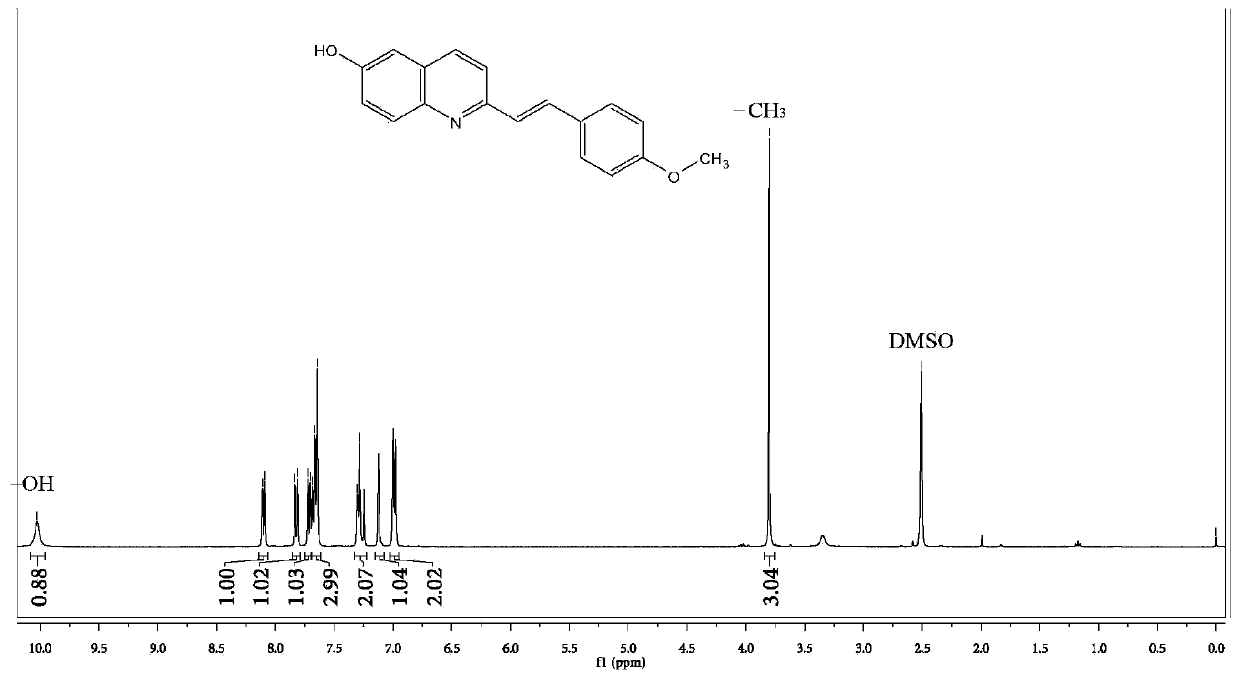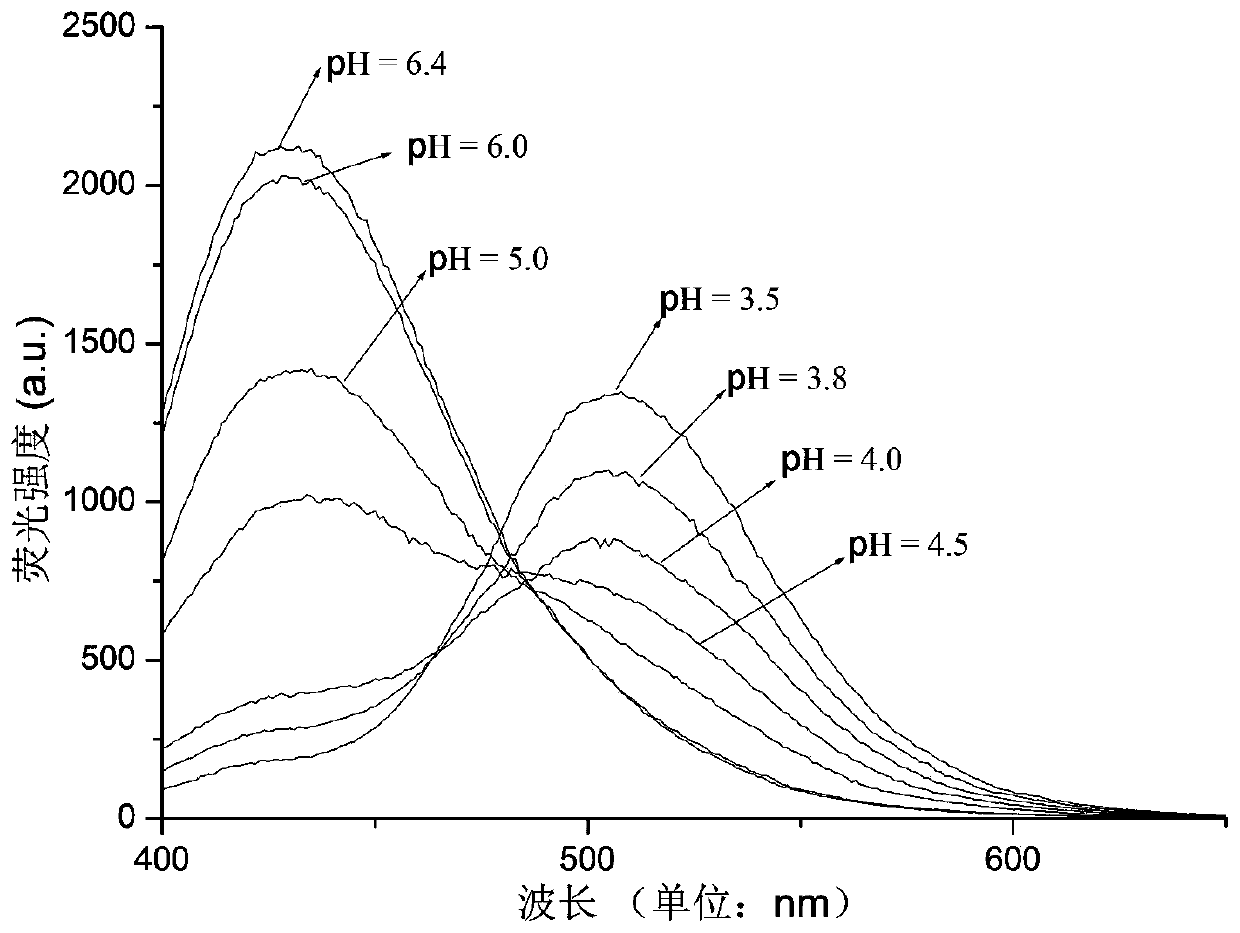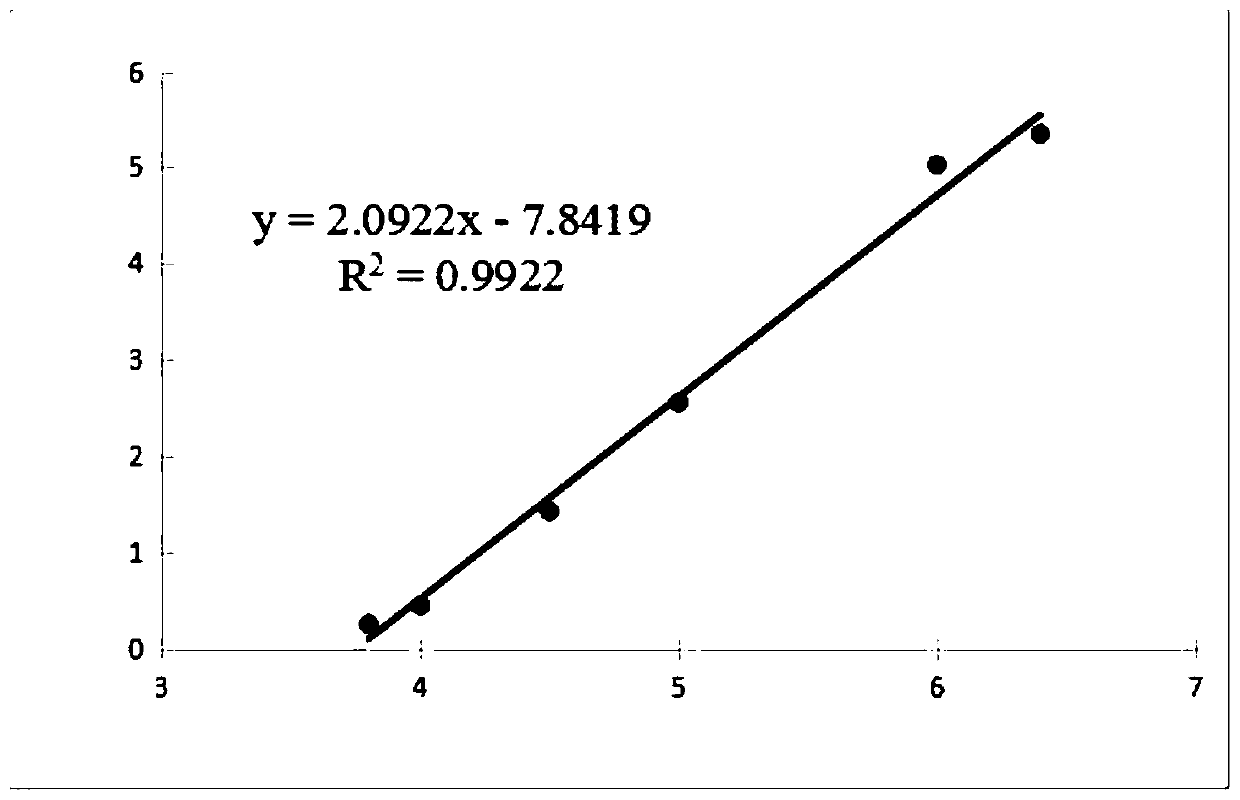Fluorescent probe molecules for pH detection, fluorescent thin film sensors, preparation methods and applications thereof
A thin-film sensor and fluorescent probe technology, applied in fluorescence/phosphorescence, material analysis through optical means, instruments, etc., can solve problems such as loss, digestion or quenching, and prone to errors
- Summary
- Abstract
- Description
- Claims
- Application Information
AI Technical Summary
Problems solved by technology
Method used
Image
Examples
Embodiment 1
[0024] Embodiment 1 synthetic pH fluorescent probe A
[0025] To synthesize pH fluorescent probe A, follow the steps below:
[0026] 1) Use a 50-milliliter single-mouth bottle as a reaction bottle, inject 1.59 grams of 6-hydroxyquinaldine, 1.63 grams of anisaldehyde and 6 milliliters of acetic anhydride, and heat the resulting mixture to reflux for 1 hour under stirring.
[0027] 2) The solvent in the reaction mixture was evaporated, and the heating was stopped when about 2 milliliters of residue remained in the reaction bottle, and 5 milliliters of 40% sodium hydroxide solution was added thereto to obtain a mixed lye.
[0028] 3) The resulting mixed lye was stirred at 90 degrees Celsius for 10 minutes and then poured into 50 ml of tap water to obtain a dilute lye.
[0029] 4) Add 10% dilute hydrochloric acid dropwise to the obtained dilute alkali solution to adjust the pH value to between 7 and 8 to obtain a neutral dilute solution. The neutral dilute solution was extracted...
Embodiment 2
[0032] Example 2 Preparation of a fluorescent thin film sensor based on the novel pH probe molecule A
[0033] Follow the steps below: put 5.0 mg of pH fluorescent probe A in 250 ml of 10% Nafion solution and mix evenly to form a casting solution. Spin-coat the casting solution onto a glass substrate and place it in a solvent evaporation chamber. Heating to 100-120° C. for 0.5-12 hours, and after removing the solvent, a fluorescent thin film sensor based on the novel pH probe molecule A is formed. The 10% Nafion solution is prepared by the method reported by Wang Shouxu et al. The solvent used is DMF. The reference is: Preparation of special Nafion solution and its application research in PEMFC, Wang Shouxu et al., "Journal of Electronic Science and Technology University" 2006, volume 35 , No. 5, pp. 826-828.
[0034] The detector used to measure the luminescent signal of the carrier on-line can be a fiber optic spectrometer. Weihai Optical Instrument (Shanghai) Co., Ltd. pr...
PUM
 Login to View More
Login to View More Abstract
Description
Claims
Application Information
 Login to View More
Login to View More - R&D
- Intellectual Property
- Life Sciences
- Materials
- Tech Scout
- Unparalleled Data Quality
- Higher Quality Content
- 60% Fewer Hallucinations
Browse by: Latest US Patents, China's latest patents, Technical Efficacy Thesaurus, Application Domain, Technology Topic, Popular Technical Reports.
© 2025 PatSnap. All rights reserved.Legal|Privacy policy|Modern Slavery Act Transparency Statement|Sitemap|About US| Contact US: help@patsnap.com



